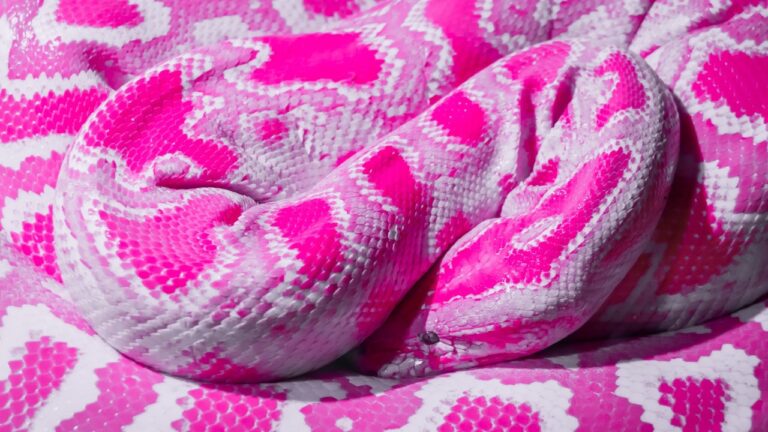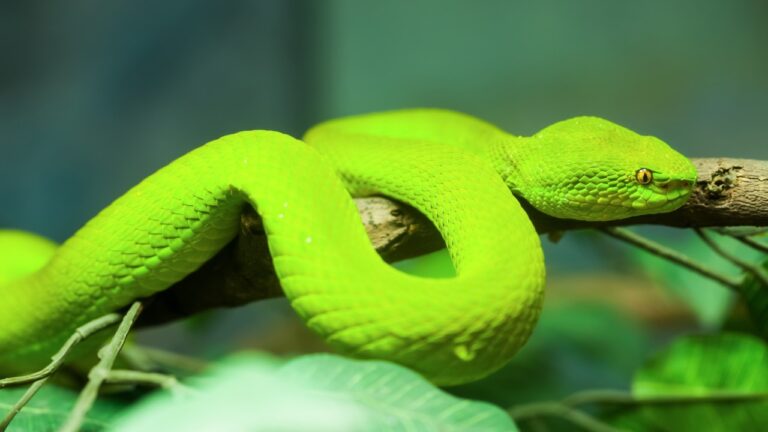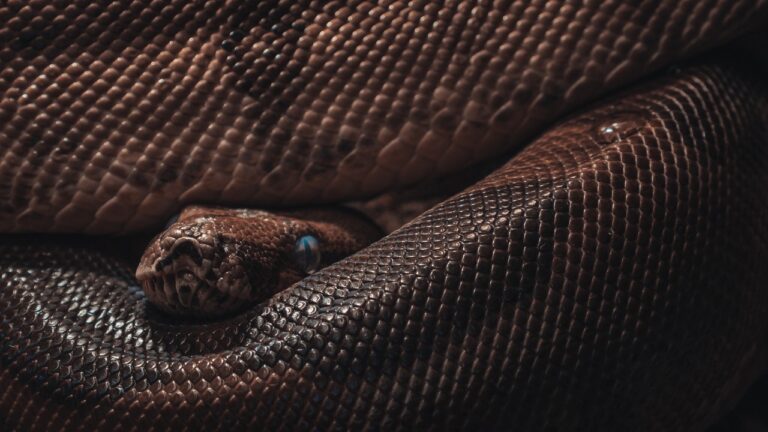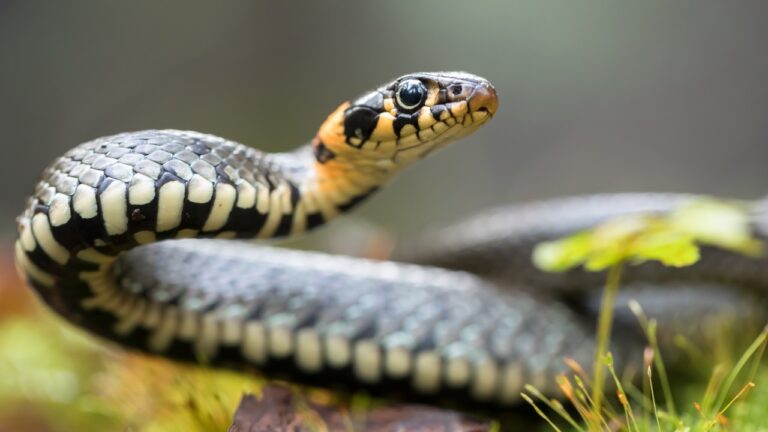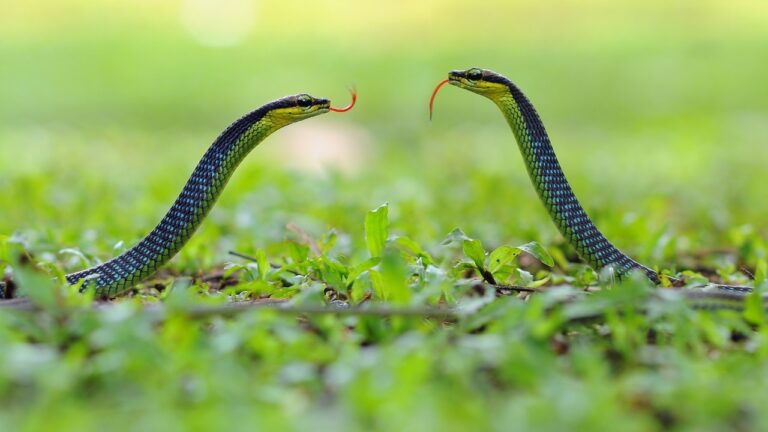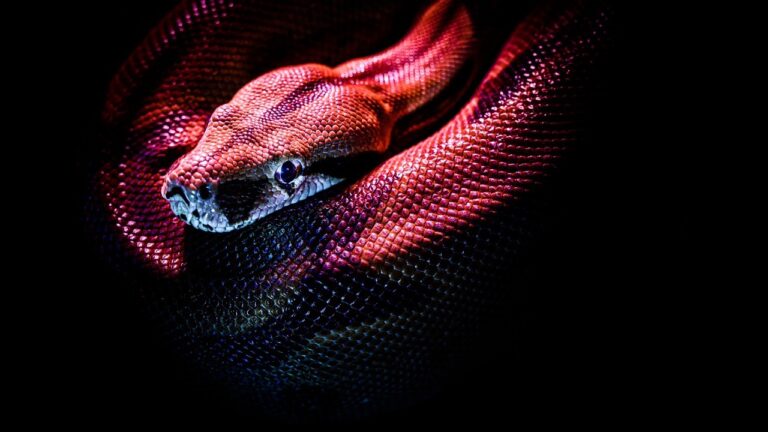Snake Feeding Frequency: A Complete Guide for Optimal Nutrition
Importance of feeding frequency for snakes
Feeding frequency is a crucial aspect of snake care that directly impacts their overall health and well-being. Providing snakes with the appropriate amount of food at the right intervals is essential to ensure they receive optimal nutrition. Understanding the importance of feeding frequency and tailoring it to the specific needs of your snake is key to promoting proper growth, maintaining a healthy weight, and preventing potential health issues.
Snakes are ectothermic creatures, meaning their body temperature is regulated by external sources. This unique physiological characteristic affects their metabolic rate and digestion process. Feeding frequency plays a significant role in providing snakes with the energy they need to thrive. The frequency at which you offer food to your snake will vary depending on several factors, including their species, age, size, metabolic rate, activity level, and overall health.
In this comprehensive guide, we will delve into the various factors to consider when determining the feeding frequency for your snake. We will also discuss general guidelines for feeding hatchlings, juveniles, and adult snakes, as well as the impact of seasonal variations on their nutritional needs. Additionally, we will explore the signs of overfeeding or underfeeding, different feeding methods, and additional considerations for snakes with special dietary needs, breeding, and reproduction.
By the end of this article, you will have a solid understanding of the importance of feeding frequency in snake care and be equipped with the knowledge to establish a well-balanced snake feeding routine that promotes optimal nutrition and overall health. So let’s dive in and unlock the secrets to providing your scaly companion with the nourishment they need to thrive.
Factors to Consider
When it comes to determining the feeding frequency for your snake, there are several important factors to consider. Understanding these factors will help you provide optimal nutrition for your scaly friend. Let’s explore them in detail.
Species-specific Dietary Requirements
Different snake species have varying dietary needs, and it’s crucial to consider these requirements when determining their feeding frequency. For instance, some snakes are strictly carnivorous, while others may have a more diverse diet that includes fruits and vegetables. Researching the specific dietary preferences of your snake species is essential to ensure you are providing the right nutrients and feeding schedule. You can consult a vet or refer to reputable sources like the snake feeding guide to gain a better understanding of your snake’s dietary needs.
Age and Size of the Snake
The age and size of your snake play a significant role in determining its feeding frequency. Hatchlings and juvenile snakes require more frequent feedings because they are growing rapidly. As they mature, their nutritional needs change, and their feeding frequency can be adjusted accordingly. Larger adult snakes generally have slower metabolic rates and can go for longer periods between meals. However, it’s important to strike a balance and not overfeed or underfeed your snake at any stage of its life.
Metabolic Rate
Metabolic rate refers to the speed at which an organism’s body processes and utilizes energy. Snakes with higher metabolic rates require more frequent feedings to sustain their energy levels. This is often influenced by factors such as the snake’s activity level and temperature of its environment. Snakes that are more active or live in warmer conditions may have a higher metabolic rate and, therefore, need to be fed more often. On the other hand, snakes with lower metabolic rates can thrive on a less frequent feeding schedule.
Activity Level and Health
The activity level and overall health of your snake should also be taken into consideration when determining its feeding frequency. Snakes that are more active, constantly exploring their enclosure, or engaging in physical activities may require more frequent feedings to meet their energy demands. Conversely, if your snake is less active or exhibits signs of illness or injury, it may be necessary to adjust its feeding schedule accordingly. Monitoring your snake’s behavior and consulting a vet if you notice any significant changes are important steps in ensuring its overall well-being.
Considering these factors will help you establish a feeding routine that caters to the specific needs of your snake. It’s important to remember that each snake is unique, and what works for one may not work for another. Experimenting with different feeding frequencies and observing your snake’s response will ultimately help you find the optimal schedule. In the next section, we will provide general guidelines for feeding frequency based on different stages of a snake’s life. So stay tuned!
Note: To learn more about snake feeding habits, you can refer to our article on snake feeding habits.
General Guidelines for Feeding Frequency
When it comes to feeding snakes, striking the right balance is crucial for their overall health and well-being. Determining the appropriate feeding frequency for your scaly friend is an essential aspect of responsible snake ownership. In this section, we will explore some general guidelines to help you establish a feeding routine that meets the nutritional needs of your snake at different stages of its life.
Hatchlings and Juveniles
Hatchlings and juvenile snakes have higher metabolic rates and growth requirements compared to their adult counterparts. As a result, they generally need to be fed more frequently. A suitable feeding schedule for hatchlings and juveniles is usually once every five to seven days. This regular feeding routine ensures they receive a steady supply of nutrients for optimal growth and development.
It’s important to note that prey size selection is crucial for hatchlings and juveniles. They should be offered appropriately-sized prey items to prevent choking hazards or digestion issues. As your snake grows, the size of the prey can be gradually increased to accommodate its expanding girth and dietary needs.
Adult Snakes
Once snakes reach adulthood, their metabolic rate slows down, and their growth rate stabilizes. Consequently, their feeding frequency can be adjusted accordingly. For most adult snakes, feeding once every seven to fourteen days is typically sufficient to maintain their health and provide the necessary nourishment.
However, it’s essential to consider the specific dietary requirements of your snake’s species. Some species may have different feeding patterns or metabolic rates that require more or less frequent feedings. Researching your snake’s species-specific needs will help you tailor the feeding frequency to its individual requirements.
Seasonal Variations
Snakes, like many other animals, may exhibit changes in feeding behavior based on seasonal variations. In the wild, factors such as temperature, daylight hours, and prey availability can influence their feeding habits. While captive snakes may not experience the same environmental fluctuations, it’s still important to be mindful of these natural instincts.
During the cooler months or winter season, snakes may enter a period of reduced activity, known as brumation. This is akin to hibernation in mammals and can lead to a decrease in appetite. Adjusting the feeding frequency during this time to once every two to three weeks is generally recommended. However, it’s crucial to monitor your snake’s condition closely and consult a veterinarian if you have any concerns.
By understanding the general guidelines for feeding frequency, you can provide your snake with a well-balanced diet and ensure its nutritional needs are met. Remember, each snake is unique, and it’s important to consider factors such as species-specific requirements, age, and seasonal variations. For more detailed information on feeding schedules, you can refer to our comprehensive snake feeding chart.
In the next section, we will explore the signs of both overfeeding and underfeeding, allowing you to make informed decisions about your snake’s dietary needs. Stay tuned!
Internal links: snake feeding chart
Signs of Overfeeding or Underfeeding
Ensuring that your snake is receiving the appropriate amount of food is crucial for their overall health and well-being. Just like with humans, overfeeding or underfeeding can have negative consequences for snakes. It’s important to be aware of the signs that indicate whether your snake is being overfed or underfed, so you can make the necessary adjustments to their feeding schedule.
Obesity
One of the most common signs of overfeeding in snakes is obesity. If your snake is consuming more food than they need, they may start to gain excess weight. You may notice that their body becomes rounder and more full-looking, particularly in the midsection. Additionally, the skin may appear stretched or taut. Obesity can lead to a range of health problems for snakes, including difficulty moving, respiratory issues, and an increased risk of organ damage.
Poor Growth or Weight Loss
On the other hand, if your snake is not receiving enough food, they may experience poor growth or even weight loss. Snakes that are underfed may appear thin and emaciated, with visible ribs and a lack of muscle tone. Their growth may be stunted, and they may not reach their full size potential. It’s important to note that some snakes naturally have a slender body shape, so it’s essential to monitor their weight and growth patterns over time to determine if they are being underfed.
Behavioral Changes
Changes in behavior can also be an indication that your snake is not receiving the appropriate amount of food. If your snake is overfed, they may become lethargic or sluggish. They may also show a decrease in activity and spend more time hiding. Conversely, if your snake is underfed, they may become more restless and constantly search for food. They may display increased aggressiveness or exhibit repetitive behaviors, such as pacing or incessantly striking at the enclosure walls.
It’s important to note that these signs of overfeeding or underfeeding can vary depending on the species of snake. Some species are naturally more prone to obesity, while others may have higher metabolic rates and require more frequent feedings. Additionally, age, size, and overall health can also impact a snake’s feeding needs. Therefore, it’s crucial to research the specific dietary requirements for your snake’s species and consult with a veterinarian for personalized guidance.
By recognizing the signs of overfeeding or underfeeding, you can make adjustments to your snake’s feeding routine to ensure they receive optimal nutrition. Remember to refer to our snake feeding guide for additional tips and insights. Monitoring your snake’s weight, growth, and behavior, along with regular veterinary check-ups, will help you maintain a healthy and thriving snake.
Feeding Methods
When it comes to feeding your snake, there are a few important factors to consider. One of the key decisions you’ll need to make is whether to feed live prey or frozen/thawed prey. Each method has its pros and cons, and it’s essential to choose the one that works best for you and your snake’s needs.
Live Prey vs. Frozen/Thawed Prey
Live prey refers to feeding your snake with live rodents or other small animals. This method can simulate the natural hunting behavior of snakes and provide them with mental stimulation. However, it comes with some risks. Live prey can potentially injure your snake during the feeding process. There is also the concern of the prey fighting back and causing harm.
On the other hand, frozen/thawed prey involves offering your snake previously frozen animals that have been thawed to room temperature. This method has become increasingly popular due to its convenience and safety. By using frozen/thawed prey, you eliminate the risk of injury to your snake and ensure that the prey is free from parasites or diseases. It also allows for better control over the size of the prey, which is crucial for maintaining a healthy feeding schedule.
Ultimately, the choice between live prey and frozen/thawed prey depends on your comfort level and what works best for your snake. If you decide to go with frozen/thawed prey, it’s important to ensure that it is properly thawed and warmed before offering it to your snake. You can do this by placing the frozen prey in a sealed bag and submerging it in warm water until it reaches the desired temperature.
Proper Prey Size Selection
Selecting the right prey size for your snake is crucial for its overall health and well-being. The size of the prey should be appropriate for the snake’s age and size. Offering prey that is too large can lead to regurgitation or other digestive issues, while prey that is too small may not provide adequate nutrition.
As a general guideline, the prey should be approximately the same width as the snake’s widest part. This ensures that the snake can swallow the prey without any difficulties. Remember that snakes have the ability to stretch their jaws to accommodate larger prey, but it’s best to avoid pushing the limits.
If you’re unsure about the proper prey size for your snake, consult a reliable snake feeding chart or snake feeding guide. These resources can provide you with specific recommendations based on the species and age of your snake.
Feeding Techniques and Safety
Feeding your snake requires some basic techniques to ensure both your safety and the snake’s well-being. Here are a few tips to keep in mind:
-
Use feeding tongs: It’s recommended to use feeding tongs or specialized feeding tools to offer the prey to your snake. This helps to keep your fingers away from the striking range of the snake and reduces the risk of accidental bites.
-
Create a feeding routine: Establishing a consistent feeding routine can help your snake feel safe and secure during mealtimes. Snakes thrive on routine, and having a predictable feeding schedule can minimize stress and promote healthy feeding habits.
-
Observe feeding behavior: Pay attention to your snake’s feeding behavior. If it refuses to eat or shows disinterest in the prey, it could be a sign of underlying health issues or stress. In such cases, it’s advisable to consult a veterinarian for further guidance.
Remember, proper feeding techniques and safety precautions are essential for the well-being of both you and your snake. By following these guidelines and providing your snake with the appropriate prey, you can ensure a healthy and enjoyable feeding experience.
Now that we’ve covered the feeding methods and proper prey size selection, let’s explore additional considerations such as digestion and post-feeding rest, snakes with special dietary needs, and breeding and reproduction in the next sections. Stay tuned!
Additional Considerations
In addition to the factors mentioned earlier, there are a few more considerations to keep in mind when it comes to snake feeding. These include digestion and post-feeding rest, snakes with special dietary needs, and breeding and reproduction.
Digestion and Post-Feeding Rest
After a snake consumes its prey, its digestive system goes to work. The process of digestion can take anywhere from a few days to several weeks, depending on the size of the prey and the snake’s metabolism. During this time, it’s important to provide the snake with a peaceful and stress-free environment to allow for optimal digestion. Post-feeding rest is crucial for snakes to avoid any complications or health issues that may arise from an interrupted digestive process.
To promote proper digestion and post-feeding rest, make sure to provide your snake with a quiet and secluded area where it can retreat and feel secure. Avoid handling or disturbing the snake during this time, as it may interfere with the digestion process and cause regurgitation or other digestive problems. Remember, snakes are solitary creatures that prefer solitude and calmness while digesting their meals.
Snakes with Special Dietary Needs
While most snakes have a relatively straightforward diet consisting of rodents or other small animals, some species have special dietary needs. These snakes may have specific requirements when it comes to prey items or nutritional supplements.
For example, some snakes, such as the green tree python, require a diet that includes a variety of prey items, including birds and small mammals. Others, like the ball python, may need additional calcium or vitamin D supplements to prevent metabolic bone disease. It’s important to research the specific dietary needs of your snake’s species to ensure they are receiving the proper nutrition.
If you are unsure about the dietary needs of your snake or have any concerns, it is always best to consult a reptile veterinarian or a herpetologist who specializes in snake care. They can provide you with valuable advice and guidance based on their expertise and knowledge.
Breeding and Reproduction
Breeding and reproduction are significant milestones in a snake’s life cycle. During this time, the nutritional requirements of snakes may change, and careful attention must be given to their feeding habits.
Female snakes that are preparing to lay eggs require additional nutrients to support the development of the eggs and to maintain their own health. It is essential to provide these snakes with a well-balanced diet that includes an appropriate ratio of protein, fats, and vitamins.
Once the eggs are laid, female snakes may not eat for an extended period as they focus their energy on incubating and protecting their eggs. It is crucial to monitor their weight and overall health during this time. If you have any concerns or notice any changes in behavior or appetite, it is advisable to seek professional advice from a reptile veterinarian or a snake breeding expert.
Understanding these additional considerations will help you ensure the well-being and optimal nutrition of your snake. By providing a suitable environment, meeting special dietary needs, and considering the reproductive cycle, you can support your snake’s overall health and longevity.
For more detailed information on snake feeding habits and guidelines, refer to our comprehensive snake feeding guide. Additionally, our snake feeding chart can assist you in creating a personalized feeding schedule for your snake.
Consult a Vet
When it comes to the well-being of your snake, regular veterinary check-ups are of utmost importance. Just like any other pet, snakes require routine medical care to ensure they are in optimal health. Consulting a vet who specializes in reptiles is crucial for maintaining the overall wellness of your scaly friend.
Importance of Regular Vet Check-ups
Regular vet check-ups play a vital role in preventive care for snakes. These check-ups allow the vet to assess the snake’s overall health, detect any potential issues early on, and provide appropriate treatments or recommendations. A thorough physical examination can reveal underlying health problems that may not be immediately apparent to the snake owner. Additionally, a vet can offer valuable guidance on diet, habitat, and overall snake care.
During a vet check-up, the vet may perform various procedures, including checking the snake’s weight, examining its skin and scales, evaluating its body condition, and assessing its overall behavior and activity level. They may also inquire about the snake’s feeding habits, digestion, and any recent changes in behavior or appearance. By closely monitoring your snake’s health through regular vet visits, you can address any concerns promptly and ensure that your snake is living its best life.
Seeking Professional Advice
While snake owners can be knowledgeable about snake care, seeking professional advice from a vet is always beneficial. Vets have specialized training and experience in reptile medicine, allowing them to provide expert guidance tailored to your snake’s specific needs. They can offer invaluable insights into snake feeding frequency, nutritional requirements, and proper husbandry practices.
If you have any concerns or questions about your snake’s health, behavior, or feeding habits, don’t hesitate to consult a vet. They can help you troubleshoot any issues and provide personalized recommendations based on your snake’s unique circumstances. Remember, every snake is different, and what works for one may not work for another.
By establishing a relationship with a reptile vet, you’ll have a trusted professional to turn to whenever you need assistance. They can guide you through various aspects of snake care, from feeding schedules to habitat setup and disease prevention. Regular communication with a reptile vet will ensure that you are providing the best possible care for your scaly companion.
Internal Links:
- For more information on snake feeding, refer to our snake feeding guide.
- If you are looking for a comprehensive snake feeding schedule, check out our snake feeding chart.
Conclusion
Feeding frequency is a crucial aspect of providing optimal nutrition for snakes. By understanding the factors to consider, general guidelines, signs of overfeeding or underfeeding, feeding methods, additional considerations, and the importance of consulting a vet, snake owners can ensure their slithering companions receive the proper nourishment they need to thrive.
Throughout this comprehensive guide, we have explored the importance of feeding frequency for snakes. We have discussed how species-specific dietary requirements, age and size, metabolic rate, activity level, and health all play a role in determining the right feeding schedule. Following the general guidelines for feeding frequency, such as providing more frequent meals for hatchlings and juveniles and adjusting feeding schedules based on seasonal variations, is essential for maintaining the overall well-being of your snake.
Recognizing the signs of overfeeding or underfeeding is crucial for snake owners. Obesity, poor growth or weight loss, and behavioral changes can indicate that adjustments need to be made to the feeding regimen. By closely monitoring these signs, snake owners can ensure that their snakes are receiving the appropriate amount of food.
Choosing the right feeding methods is another important consideration. Deciding between live prey and frozen/thawed prey, selecting the proper prey size, and employing safe feeding techniques are all essential for the health and safety of your snake. By following these guidelines, you can minimize the risk of injury to both your snake and the prey.
Additionally, there are several other factors to consider, such as digestion and post-feeding rest, snakes with special dietary needs, and breeding and reproduction. Understanding these additional considerations will help you provide the best care for your snake and address any specific requirements they may have.
While this guide provides valuable information, it is always recommended to consult a vet for professional advice. Regular vet check-ups are crucial for ensuring the overall health and well-being of your snake. A veterinarian with expertise in reptile care can provide personalized guidance based on your snake’s specific needs and help you make any necessary adjustments to their feeding routine.
In conclusion, feeding frequency is a critical aspect of snake care that should not be overlooked. By following the guidelines outlined in this guide and seeking professional advice when needed, you can ensure that your snake receives the optimal nutrition they require for a healthy and thriving life.
For more information on snake feeding, you can refer to our comprehensive snake feeding guide or check out our snake feeding chart to help you plan and schedule your snake’s meals effectively. Remember, a well-fed snake is a happy and healthy snake!


